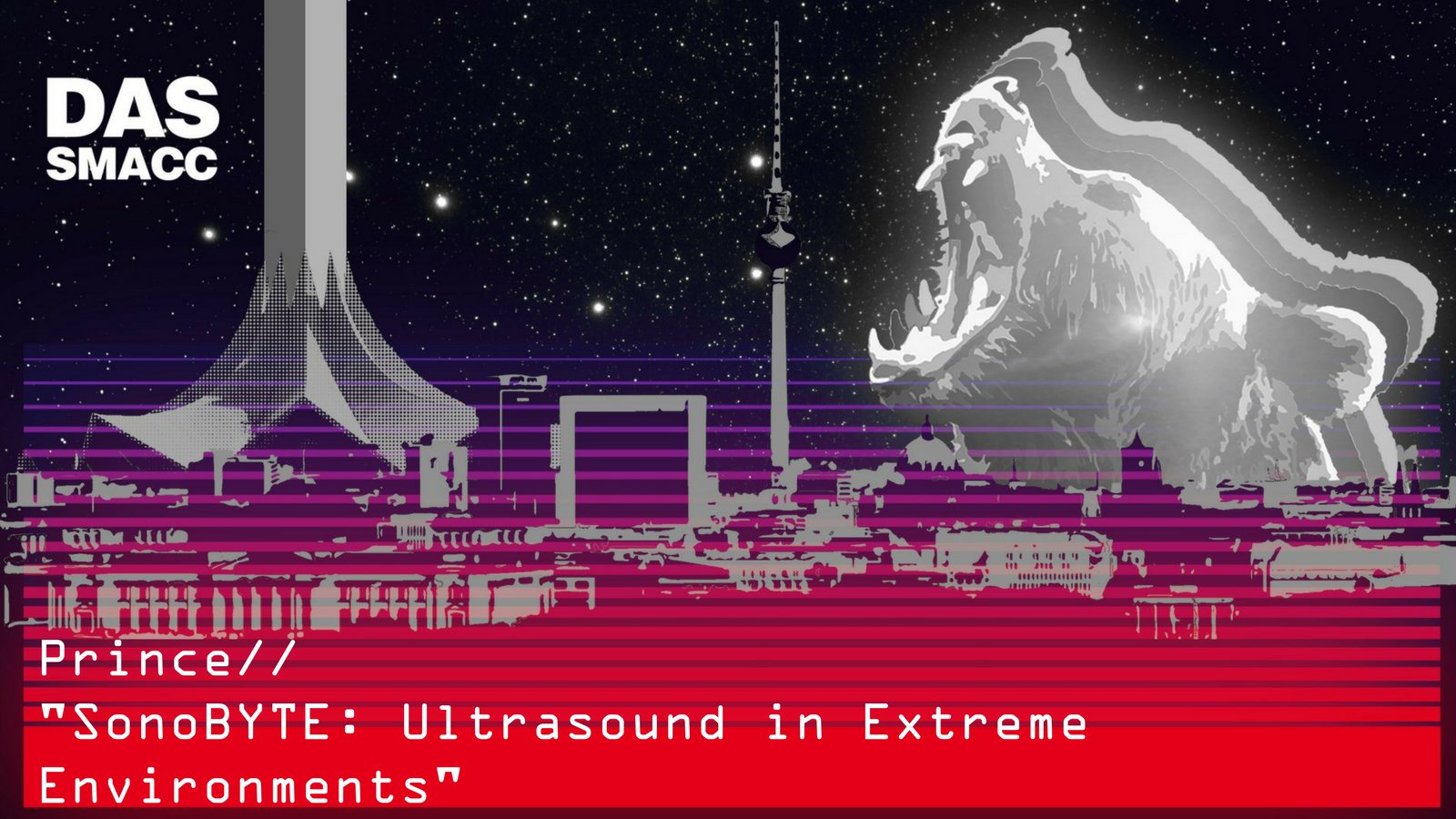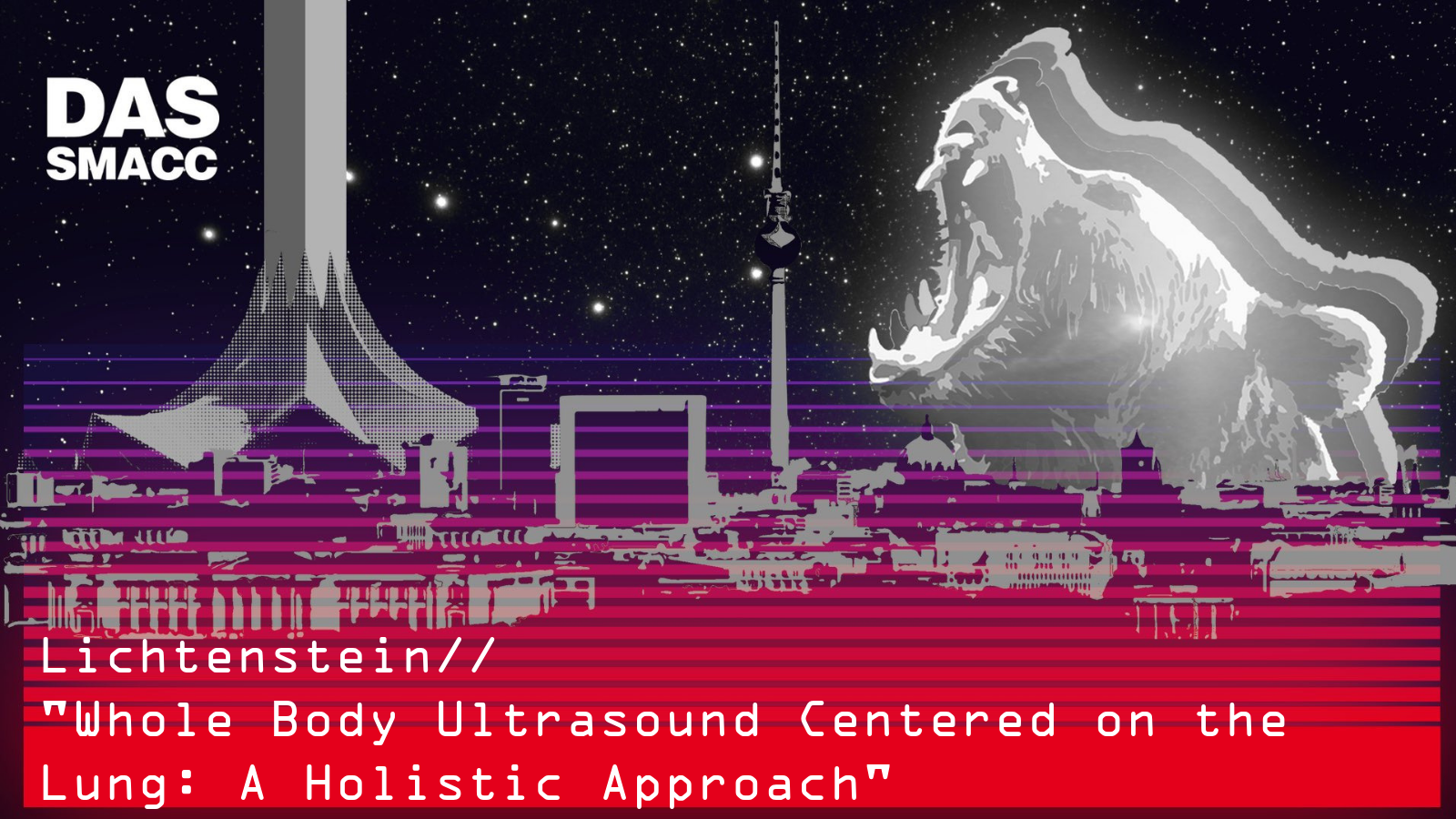The challenge of making a medical diagnosis with limited information by Anand Swaminathan
Emergency physicians often have to make decisions without all of the information.
In this podcast, Dr Anand Swaminathan shares a case where EMS rolled into emergency with a patient. This patient was short of breath, hypotensive, tachycardic and hypoxic.
Moreover, she had syncopized at a rehabilitation centre and by the time she got to emergency, she is seriously unwell and unable to provide much information.
Dr Swaminathan shares the steps he took in diagnosing a patient who was too sick to go for a CT scan.
His first piece of advice? Ultrasound is key.
Ideally, we all want to have diagnostic closure before prescribing medication which could be harmful. However, this isn’t always possible if a patient is too sick.
So, how do we make the call without a definitive medical diagnosis? Evidently, we need to think about the exclusions, weigh up all the options and do what is right for the patient.
Tune in to a Carr’s Clinic, rapid fire talk with Anand Swaminathan and David Carr.
The challenge of making a medical diagnosis with limited information by Anand Swaminathan
For more like this, head to our podcast page. #CodaPodcast
– (David) This is an absolute privilege. A man with just one name, Swami. Major contributor to EM:RAP to REBEL EM, and now he’s on TV just about every day. I am so happy to be here with you. I hear you have an awesome case. I want to hear about it, hit it.
– (Swami) Dave, I got a great case for you. So this is actually my first week in my new job. So I’d been in my old job for 13 years, came over the river, new job, and I walk in at 7:00 am, taking handover from the prior doc, and EMS rolls in with a patient.
The patient is clearly sick you can tell because our medics are extremely skilled. They’re very experienced and they look a little pale. So we look at this patient and they tell me that they’re coming from a rehab facility. This is all pre-COVID. The patient is short of breath, she’s hypotensive, she’s got a pressure of like 70/40, tachycardic to the 140s, hypoxic 91%.
They’re coming from rehab, this patient had gone to rehab. She had a trimal ankle fracture dislocation, had an ORIF and now was in rehab for about a week, getting rehabilitated. She was on her way to breakfast and she syncopized.
So they tried to wake her up and had a little trouble. They finally got her awake, noticed that she was clearly not doing well, threw her in an ambulance and brought her over to us. We look at this patient and right off the bat, we know very little, the patient can tell us almost nothing. All she can tell us, all she’s saying to us really is, “don’t let me die, don’t let me die. Oh my God, am I going to die today?” Not really helpful in terms of history, so a little bit undifferentiated in terms of what we’re going to do to take care of this patient.
– (David) It’s amazing how poor of a prognostic factor that statement is. To me, this screams PE, are there other things on your mind that you’re thinking about here?
– (Swami) Yeah, I think we jump to PE pretty quickly. I mean, she had a surgery, major surgery, she’s in rehab, she’s syncopized, she’s hypotensive and tachycardic and hypoxic. It’s got to be PE but there are other things we have to think about, right? So she’s got shortness of breath. We quickly put a stethoscope on the lungs and the lungs are crystal clear.
So right away we can eliminate some things, right? So it’s very unlikely this patient has a pneumothorax. A tension pneumo that sprung up all of a sudden caused this. Shortness of breath and clear lungs does give me a little bit of a narrower differential to think about.
When I think about that, I think about things like metabolic acidosis, the classic being like the aspirin overdose, or the DKA patient, I think about cardiac tamponade, I think obviously about PE, pulmonary hypertension, ACS has to be on the list as well.
So there’s a smaller group of things that cause shortness of breath with clear lungs. As much as you know, during COVID David, you and I were pretty much the same, we took our stethoscopes and we threw them away. This was a place where the stethoscope right away gave us a lot of information.
– (David) Yeah, we’ve been going back and forth about this. The stethoscope to our new grads, is the ultrasound for your ears. But I bet you had to stay old school there. Tell me, you must have brought POCUS. You can’t go PE these days without POCUS. What do you got there?
– (Swami) Yeah, so as much as the stethoscope is helpful, it can only get you so far and I don’t trust my ears. So as soon as I’m going into that room, I’ve got POCUS with me. In fact, I don’t think there’s much of a role at this point for rolling into a room with an undifferentiated patient with shock or any patient with shock without an ultrasound. The amount of information you can get in a very short period of time is absolutely incredible.
David, I barely trained with ultrasound. I’ve learned all of it on the fly now. So we rolled in with ultrasound and I think that the key is to have a structured approach. There’s a lot of different ones out there, right? You could do the RUSH, you could do the EGLS, my friends, they’ve got the EGLS, Echo Guided Life Support. You can use any of these. I like RUSH because there’s not a lot of things for me to think about. It’s a little bit prescriptive, which means that I’m not going to miss much.
So we brought POCUS in right away with RUSH, dropped it on the heart, that’s the first place to look. Then we’re going to swing over, we’re going to look at the lungs, we’re looking at the belly and we’re looking for other reasons aside from just the PE but also signs of PE that could convince us that’s the diagnosis. Ideally David, we would be rolling off to CT scan, but you know, that’s where people go to die that are hypotensive and tachycardic and hypoxic.
– (David) The circle of death. Nowhere does anyone want to be less. Tell me what you’re specifically looking for on ultrasound, you and I are both similar vintage, late trained to the game, tell us what you need to look for?
– (Swami) All right, so first thing is, we’re going to drop this on the heart. You know, a lot of people say, which view do I need of the heart? Ideally, you can get all of them because they can all add something.
I like to start with a parasternal long and I’m looking for the overall cardiac function. I’m looking for that pericardial effusion because if there’s a large effusion, I probably have my diagnosis and I know what I need to do next. So looking for the effusion, looking for some general ejection fraction, I’m looking at that right ventricle. Is it a big right ventricle, bigger than the left side? Is there bowing over into the left side? If I’m not sure about that, I can switch to a short axis and see that classic D sign that you see with a massive pulmonary embolism. Then I can also do a four chamber, the apical four that can give me some different information too.
From there, I like to swing down to the IVC, especially if the patient has some pericardial fluid. If they’ve got some pericardial fluid, I look for the IVC. Is it full, does it have any variation with respiration? We look at the lungs because even though I said the lungs sound clear, that doesn’t mean I couldn’t have missed a pneumothorax. So I looked for lung sliding, look for B lines, especially focal B lines could tell me maybe there’s a pneumonia cooking.
Then I’m going to drop down to the belly and look for free fluid. If you change the scenario a little bit and you have a 25 year old woman who comes in with these vital signs and then I look at the belly and I see free fluid, that’s a ruptured ectopic pregnancy. We know what to do with that. So I’m going to look at the belly, I’m going to look at the aorta.
Then, you know, the RUSH exam does add into it, looking down at the legs for a DVT. I don’t always look for a DVT but if I’m not convinced, if I’m not clearly seeing this huge right ventricle, I’m not clearly seeing signs of a heart strain, I might pop down to the leg because if I find a DVT with the patient who is short of breath and hypotensive and tachycardic, I probably have my diagnosis right there.
– (David) So, lots going on, in a very short amount of time. Two questions, how are you feeling? How’s the patient managing as well?
– (Swami) Well, the sphincter is either tight or loose, it just depends on the exact moment we’re talking about. We’re anxious here, right? Because this patient doesn’t look good and so we start with our usual stuff, while I’m doing my POCUS, my amazing team is popping in IVs, we’re getting oxygen on the patient.
The other thing that we’re calling for immediately is for a Vasopressor. I think in the past we used to say, “oh, we’ll give them some fluids” but if this patient has a PE, which we were pretty sure she did, that’s probably not going to help at all. That right ventricle is going to bow out more. It’s going to impede on the left ventricle more. So we just called for Norepinephrine right away. Start the norepinephrine up on this patient, let’s get some of that tone back. Let’s get some squeeze back in that heart, let’s give us a little bit more time.
So we get the norepi up and then we’re thinking, what are the next steps?
As we’re looking at that heart, we see a big right ventricle. We see bowing over in the left side. I didn’t even have to pop down to the legs. Granted, you can have pulmonary hypertension chronically and it’s not a PE but this is a patient who came in with this acute onset, syncopized, short of breath, hypotensive and tachycardic. This is a pulmonary embolism. So, yes, we’ve got the norepi hanging but of course David, what we’re thinking about is thrombolytics.
Do I need to give this patient thrombolytics and do I feel comfortable giving them thrombolytics without having the whole story?
– (David) Yeah, so you’re avoiding lots of fluids, you’ve given the pressors, are there any other cool drugs that you think we need to know about that sometimes can temporise things? Do you like anything else?
– (Swami) Yeah, so I think so. I think while you’re looking at this and you’re getting your norepi up, we’ve got to think about maybe relieving some of the stress on that right ventricle. We have a couple of options. The classic ones are things like epoprostenol and nitric oxide, and David, I can barely pronounce epoprostenol, much less figure out where it lives and what the dosing is. It’s going to be delayed. It’s going to be delayed in getting it. I’ve called for nitric oxide a handful of times, it’s always delayed.
So I learned a little trick from Sarah Krieger, who’s an intensivist out in LA, you can use nitroglycerin inhaled. So we’re not giving it systemic, we’re going to put that nitroglycerin about five milligrammes into a big volume nebulizer and nebulize it in. What happens is that nitroglycerin goes down to the lungs, it’s converted to nitric oxide. So essentially, I’m giving the patient nitric oxide, which causes pulmonary vasodilation. That can relieve some of the strain on that right ventricle.
The other thing we can do is add another vasopressor specifically vasopressin, which we don’t use a lot. But vasopressin has its own pulmonary vasodilation. So I didn’t know about the vasopressin thing back then. That’s something that I learned from Scott Weingart just recently. So I didn’t call for that but the nitro I knew about, so I called for inhaled nitro.
I got a little bit of a look like, you want what? Then I take the nitro, put it in a nebulizer, slap it on the patient, she’s going to get better. So we’ve got inhaled nitroglycerin, we’ve got the norepi up, and we’ve decided at this point, she’s got a massive pulmonary embolism. So we’re calling for a thrombolytics as well.
– (David) Good, you’re going to lyse her?
– (Swami) Yeah, we lyse her because we’re convinced, without the CT scan, we’re convinced and I think this is hard David, because we have such good imaging modalities now, we rely on those imaging modalities to make the diagnosis and almost force our hand to give the drug, right? We want to really have that diagnostic closure before giving something that can be harmful, but this patient’s too sick to go to CT scan. I can’t get her stable enough just yet.
So we go ahead and we call for thrombolytics. Thrombolytics are embraced by most of the major associations in the States for massive PE and I think most people would say, that’s the treatment once you have it. It’s making that call without the definitive diagnosis that was tough and we tried to go through some of those exclusions.
There are some hard exclusions, like if she recently had a hemorrhagic stroke, probably not going to give her thrombolytics. If she recently had spinal surgery, that’s a relative contraindication. She didn’t have any of those things. So we decided that this was the right thing to do.
The couple of things that I remember reading about is if you’re going to give thrombolytics and PE don’t give heparin. Because heparin alone and thrombolytics alone can both cause major haemorrhage. You put them together and this is like the opposite of the chocolate and peanut butter combination. These are two things that do not go well together.
So we held heparin, we started thrombolytics and the dose is always one of those question marks. Like what dose do you give? We decided she was crashing and dying, so we gave her 25 milligrammes as a bolus and then another 75 milligrammes over the next hour.
Honestly, I don’t know what the right dose is for thrombolytics. 100 milligrammes is what most people talk about but 100 milligrammes as an infusion over an hour. I don’t think she was going to make it that long. So we gave her a little bit of a kick, gave her the 25 as a bolus, 75 over an hour. David I’ll tell you, she stabilised.
Whether this was the norepi and the nitroglycerin and the vasopressin, or if it was the thrombolytics, we’re never going to know. She got better pretty quickly within 15 or 20 minutes, she was already starting to get a little bit of colour back.
– (David) That’s fantastic and that’s a great save. That’s sometime where you have to go home and feel really good. We’re going to wrap up quickly. I just want 20 second take on do you have a code PE at your shop? Do you believe that you should have a central thing that helps you with this cognitive offloading? Because these are complicated decisions.
– (Swami) These are complicated decisions and I don’t have a PE response team at my place, I had one at my old shop and these are great. If you don’t know about these, you basically make one phone call and I get the intensivist on the line, the CT surgeon, the interventional radiologist and a cardiologist.
So I get four experts on the phone at one time. All we’re going to talk about is this patient and what we think is the best plan. The handful of times that I called them in my prior life, my old job, you would call them and be like, I want to do a systemic thrombolytics. The interventionist will say, “you know, patient’s hemodynamics are pretty good. I’m in house right now, why don’t you bring her up to the lab and we’ll drip in some thrombolytics.”
Or the other way around where I said, “maybe we should just do some IV, some a catheter directed lytics, and they’re like, no, that patient’s too sick. Give the systemic lytics I’ll come and see her and then maybe we’ll give her a catheter in a day or in a couple of hours when she stabilises.”
Or I want to give systemic lytics and the CT surgeon is like, “no, no, no, no. I’m going to take that patient to the OR right now.” So what you get is that expertise, all kind of coming together, discussing the one patient and then helping you to make the best decision for that patient.
The great thing about this too, is it’s almost the same team that you need for an aortic dissection. So you can multitask this team. It’s a PE response team but if you had a dissection, call that line too and tell them “oh, I got a dissection, I need all of you guys on board for this too.” It’s a really nice way to kind of get your teams together, talking the same language and really helping the patient.
– (David) Unbelievable case, unbelievable save, sum it up in three or four points, take it home.
– (Swami) Yeah, so I think that the crux of this case, is a couple of big things. One is making a rapid diagnosis. You can’t do that without POCUS. So get good at POCUS, get good at looking at the heart, get good at your echo.
The better you are at that, the more of these diagnoses you’re going to make very quickly, whether it be PE or tamponade.
The second thing that I think people really need to take away is making a decision without all the information. That’s what we do in emergency medicine. I think most of us would have liked to have a little bit more information. Like she just came back from CT and then she dropped her pressure. That would be helpful.
Sometimes we have to make those decisions without all the information. We weigh up as much as we can and then we pursue a plan and we know that sometimes that plan is going to be wrong. We don’t want to make the error of omission. This patient’s sick, they’re dying, that’s most likely a massive PE, I can’t take her to CT, let’s pull the trigger and do what’s right for the patient. So sometimes we have to operate with limited information. You’ve got to get comfortable doing that, David, that is the heart of emergency medicine.
– (David) That’s what the master clinician does. Thank you so much, awesome case, awesome discussion. See you down under soon.
– (Swami) Oh, I can’t wait, David, thanks.
David Carr
David Carr is an Associate Professor in the Division of Emergency Medicine at the University of Toronto. He is an Emergency Physician and Clinical Investigator at the University Health Network and Mackenzie Health Hospital. He has been the recipients of multiple Undergraduate and Post Graduate Clinical Teaching awards. During the Baseball season, he works at the Roger’s Centre as the Medical director of Stadium Medicine for the Toronto Blue Jays. In 2010, he pursued his passions serving as an ER physician in the Athletes Village for the Winter Olympics in Vancouver. Since 2010, He has co- authored the chapter on Occlusive Arterial Disease in the 7-9th editions of Tintinalli’s Emergency Medicine.
Anand Swaminathan
Anand Swaminathan is a core faculty member of the St. Joseph’s Regional Medical Center Emergency Department in Paterson, NJ. He is an assistant professor of Emergency Medicine at the Hackensack Meridian School of Medicine and the Medical Education Fellowship Director at St. Joseph’s Hospital. His main interests are in resident education, faculty development, resuscitation and knowledge translation. Anand is the managing editor and conference chair for EM: RAP and the managing editor for EM Abstracts. He is a big believer in and contributor to the Free Open Access Medical Education (FOAM) movement. Anand is an associate editor for REBEL EM and REBELCast and a regular contributor to the EM Cases Quick Hits podcast. When not working, Anand enjoys long distance running and building Legos with his kids (Matt 12, Maya 9 and Luke 5).





